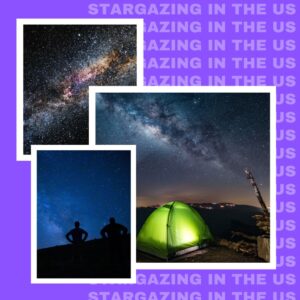This site contains affiliate links to products. I may receive a commission for purchases made through these links.
You may initially be okay viewing objects in the night sky without filters, but as you expand your targets, you will need filters to maximize your viewing experience.
Filters can help you increase or improve the contrast and sharpness of your view. They also protect your eyes when viewing the sun and other objects. Hence, you must have filters in your toolkit and know how to use them.
This article will explain in detail how to use telescope filters and provide answers to a few questions about them.
Do I need a telescope filter as a beginner?
Beginners may not need filters at first, but as they gain experience, a lack of filters will impact their viewing experience. That’s why it is recommended that beginners get at least a moon filter to start with.
For starters, most beginners have a budget when starting. A lot of the time, the budget barely covers the cost of a reasonable telescope.
Then you add the cost of buying new eyepieces and perhaps a mount (Let’s be frank, many eyepieces that come with most telescopes are subpar). It’s easy to see how the total cost, even without filters, can balloon out of reach for many beginners.
In essence, don’t let a lack of filters stop you from starting your astronomy journey if you can’t afford them early on.
Another reason why you may not bother with them yet is limited knowledge. You’ve yet to settle on the type of night sky targets you enjoy, talk more about identifying the kind of filters that work for those targets.
There are different types of filters. It’s important to know what type works for what before investing your money.
Some telescopes provide one or two filters, typically a moon filter, that you can use to practice attaching filters to telescope eyepieces before splurging on new ones.
Suffice it to say that you can do without them early on. But over time, they are very good investments that’ll take your observation sessions to new heights.
What are telescope filters used for?
Telescope filters are used to increase contrast, reduce glare when the moon is full, observe the sun, reduce the effect of light pollution in urban areas, and ultimately protect astronomers and their optical accessories.
The primary reason for using telescope filters is to enhance your view. Whether viewing the moon or faint objects, you want to see as many details as possible.
You can use a telescope filter for a myriad of reasons. One of the reasons is to increase contrast. With increased contrast, you can tell apart different spots on the same object. For example, you’ll be able to spot the craters on the moon better with a filter.
They are also specifically used to see certain features in selected objects. For example, you can see more features on Mars by using a red filter.
Some filters, such as city light suppression filters, help reduce the effect of pollution on space observation. These filters are necessary if you’re observing from major cities where there’s excessive light pollution.
Some other technical filters are used to shield sensitive elements like camera sensors.
Professional astronomers also use filters in their work. They use them to measure how hot a sky object is and other details, such as its age and direction.
Types of telescope filters
At the heart of it, most telescope filters work by limiting the wavelength of light transmission that gets to your view. In simpler terms, it filters out some aspects of light.
This filtering ensures less noise (light waves you don’t want) enters your view, thus allowing you to focus on what matters to you. What matters to you or what you want to view determines the type of filter you use.
There are many types of telescope filters, including color filters, lunar or moon filters (also known as neutral density filters), narrowband filters, solar filters, broadband filters, light pollution filters, and chromatic aberration filters.
Lunar or moon filters
When the moon is at its fullest, it is significantly brighter than usual. The brightness may prevent you from observing the moon properly.
Also, while you’ll still see the moon, it’ll be too bright to notice any details on its surface.
Lunar filters help to reduce the glare from the moon and give room for the moon’s details and features to shine through by increasing contrast.
A moon filter or neutral density filter is more popular in photography but has also found a place in astronomy.
Let me also share a quick tip with you. You can lessen the glare from the moon by reducing the light entering the aperture.
To do this, place the dust cover over the telescope and only remove the small cap. This step will reduce the light entering the aperture and allow you to view the full moon. That said, the experience is not comparable to using a moon filter.
Types of moon or lunar filters
There are two types of lunar filters; fixed and variable brightness.
Fixed variable brightness moon filters
Fixed variable moon filters will always let through the same amount of light. The most common variant is the 13% kind, which blocks 87% of the light from entering the eyepiece.
The Orion 05662 1.25-Inch 13 Percent Transmission Moon Filter is an affordable fixed variable moon filter that fits every budget. Telescope Moon Filter by Celestron is also a fantastic option you can consider.
Variable moon filter
On the other hand, you can alter the amount of light that gets through with variable moon filters. They consist of two glass polarizing filters that you can adjust to alter light transmission.
By adjusting the lower filter, you can typically allow between 1% to 40% of light to pass through.
The Variable Polarizing Moon Filter by Celestron is a popular option among beginner and experienced astronomers alike.
Color filters
Color filters work by reflecting and allowing parts of the light spectrum colors. All the colors in the light spectrum have their dedicated filters. There’s a Wratten number for each color and what they do.
For example, the number 8 (#8) yellow filters will help you see the darker features on Jupiter’s belts. Kodak developed the Wratten number in 1909.
Now, let’s discuss some color filters.
Red filters
Denoted by #25A blocks about 86% of light. It has many purposes, such as viewing Mars’ ice and polar areas and cooler stars (those with a temperature of 3000 °C or less).
You can also use red filters to reveal more contrast between Jupiter’s blue clouds and its background clouds. Red filters are useful when you’re observing during the daytime.
Dark blue filter
These filters prevent 83% transmission of visible light. They are best suited for increasing the contrast when viewing Jupiter, Venus, and Saturn.
You can also use them to view the dust storms and polar regions on Mars. They have a Wratten number of #38A.
Light blue filter
The Wratten number for the light blue filter is #82A. They allow 73% light transmission. It is one of the filters that can serve multiple purposes. This makes it a nice addition to your toolkit.
You can use this filter to view bright galaxies, the moon, and planets like Saturn and Jupiter.
Dark green filter
Dark green filters have a Wratten number of #58A. It especially helps you to see the clouds of Venus.
You can also use them to improve the resolution of Jupiter’s Great Red Spot, Saturn’s white clouds and Polar Regions, and Mars’ polar caps.
Light yellow filter
Light yellow filters (#8) allow 83% transmission of light. You can visibly see the Maria Crater on Mars using this filter. The red and orange areas will also be visible if you use this filter when viewing Jupiter.
If your telescope has a large aperture, this filter will also help you to see more detail on Neptune and Uranus.
Light red filter
This filter allows only 25% transmission of light. Light red filters are a perfect match for Mars. It provides more contrast when viewing Mars, enough to show you more surface features than usual.
You’ll be able to spot the yellow dust clouds and the canal markings of Mars. That said, you can equally use this filter to observe the blue clouds on Jupiter and Saturn.
The Neewer 1.25 inches 5 Color Filters Set (Red, Orange, Yellow, Green, Blue) is a big money saver with many options to enhance your planetary observations.
Solar filter
Solar filters are tailored specifically for viewing the sun. The best choice when it comes to solar filters is to purchase full-aperture filters. You typically place this filter in front of your telescope to block light as it enters your primary mirror or lens.
Let me get this advice/caution out of the way. Don’t EVER view the sun via your telescope without a filter. It’s a recipe for disaster and can cause serious damage to your eyes, including complete blindness.
You’re effectively protecting your eyes and the telescope when you use a solar filter.
Celestron’s EclipSmart filter is great for observing solar eclipses and comes at an affordable price point. This Solar Filter Sheet for Telescopes by Thousand Oaks Optical is also highly recommended by me, and it won’t drill a hole in your pocket.
H-alpha filter
The H-alpha (hydrogen-alpha) filter is a type of solar filter you can try. With this filter, you can see the sun brimming with activity, especially within the chromosphere.
This is because H-alpha filters help you see hot gas, which makes up the sun. So you can use this filter to see the sun and anywhere there’s hot gas in space.
This filter is also great for viewing solar eclipses and bright nebulae.
The H-Alpha Filter for Deep Sky by SVBONY is one of the top-rated filters in this category.
Light pollution filter
Light pollution filters are designed to block the transmission of artificial light bands while offering better contrast for faint nebulae. That’s why they are also known as deep sky filters.
Major cities and urban areas are not great spots for astronomy because of the various light sources “blocking” the light from space objects.
As such, you can’t get a clear view of the objects you’re targeting. Other factors such as dust, car fumes, and smog compound the problem.
That’s where light pollution filters come in.
Light pollution filters are the most expensive of the telescope filter bunch. The SVBONY City Light Pollution Reduction Filter is one of the best telescope filters you can purchase.
Read also: 16 Top-Rated Light Pollution Filters for Your Telescope
Chromatic aberration filters
Chromatic aberration filters help to eliminate the purplish halo that some refractor telescopes produce when you’re observing the brighter sky objects such as the moon and planets. As such, they do not work if you’re observing faint objects.
Oftentimes, the halo prevents you from seeing major details in the bright object you’re observing. You can equally classify them under color filters based on what they do.
Broadband and narrowband filter
Broadband and narrowband filters are not different kinds of filters per se. They’re a broad category covering other filters. All filters are classified based on their width.
Broadband filters allow the transmission of light waves within a broad frequency band. For example, a filter may have a bandpass ranging from 442 to 542 nanometers. That’s a wide 100-nanometer range. The typical range is between 100-150 nanometers.
On the other hand, narrowband filters only permit light waves within a narrow frequency band. For example, a filter with a bandpass between 501nm and 506nm only has a difference of only 5 nanometers.
There are also filters designated as intermediate.
Examples of broadband filters include ultraviolet filters, blue filters, light pollution filters, and infrared filters. H alpha filter is an example of this type of narrowband filter.
How to use telescope eyepiece filters
Telescope filters are incredibly easy to use. The only caveat is that you must treat them with care.
Choose the right filter for the job
You must ensure the filter you select will work for its intended purpose.
If you want to observe the sun, you should use a solar filter. If you must observe nebulae, you must use a light pollution filter.
If you’ll be viewing multiple targets during your session, I suggest you make a plan. You can write all the targets you’ll be viewing in a jotter and assign the required filter for each target.
There may be targets that require the same filter. In such cases, itemize the targets that require similar filters such that they follow each other. This will reduce having to swap eyepiece filters more than necessary.
Lastly, ensure the filter’s size matches that of the eyepiece.
Clean the filter before use
Before attaching the filter to your telescope, it’s good practice to clean it. This step will help remove dust and fingerprints from the filter and smoothen your viewing session.
Dust can scratch your eyepiece and render them partially useless. Use a bulb blower to remove dust from your filters. Do not blow your filters with your mouth. You may spit on them and damage them because they aren’t water-resistant.
To remove things like fingerprints, refer to the manufacturer. They typically have recommendations for such situations. Potential options include isopropyl alcohol and microfiber cloth.
Ultimately, always remember to be gentle and careful when cleaning your filters or any telescope accessories.
You may also like: 15 Things to Avoid When Using a Telescope
Attach the filter to the telescope eyepiece
After putting the filter in tip-top shape, it’s time to attach it to your scope. First, remove the eyepiece from your telescope’s focuser – where your eyepiece sits.
Attach the filter to the side of the eyepiece that sits in the focuser. Ensure it’s well screwed into the eyepiece before placing the coupled elements into the focuser like you normally do.
You may also like: Telescope Eyepiece Guide (Beginners Friendly)
Adjust the focus and exposure settings as needed
If you’re taking astrophotos, then you may need to make changes to the settings on your camera.
Why? One, less light is coming in now. Also, because you can see more details on your target, you probably need to adjust the focus settings too.
Experiment with different filters to achieve the desired effect
You may have visualized the result of your images, but the truth is it may not come out as imagined on your first try. Perhaps you chose the wrong filter. Perhaps it’s just your telescope. Whatever the issue is, experimenting will likely get you closer to your goal.
Store filters in a clean and dry place when not in use
When done with your session, ensure that you keep your filters safe. Safe is where the filters won’t gather dust, be bathed with water or liquid, or fall.
Most filters are not water resistant, which means water can damage them. Dust can scratch the coatings on the filters, thus compromising their integrity.
The goal is to increase the lifespan of the filters and that of your eyepiece.
Frequently asked questions about telescope filters
Below, I’ve answered a few popular questions on this subject matter.
Where do you attach telescope filters?
You attach telescope filters to your eyepiece before placing the latter into your telescope’s focuser.
You have to “screw” the filter to the bottom of the eyepiece and ensure it’s firmly in place so it doesn’t damage your eyepiece or telescope.
Which telescope filter is best for viewing planets?
Color filters are the best for viewing planets. Planets have various features and details. You will require different color filters to see these details.
That said, Blue filters are one of the most popular color filters. It’s one of the best filters for viewing Jupiter and Saturn.
Are telescope filters worth it?
Telescope filters are absolutely necessary to fully enjoy astronomy. Filters make it possible to really appreciate the true beauty of the objects in space.
We won’t be able to see the activity in the sun without filters, nor can we appreciate the details of the Great Red Spot. So, filters are super worth it.
Takeaway: Master how to use telescope filters to enhance your stargazing sessions
I can’t stress it enough that a telescope filter is an amazing accessory that will help you see the true beauty of night sky objects.
There are many types of filters, including color filters, h-alpha filters, light pollution reduction filters, and much more.
The key is choosing the right filter for the right object. Once initiated, you can never go back to viewing without filters.
You may also like:











